cherry blossoms, culture, flower types, hanami, japanese festival, sakura of japan
Sakura of Japan: Best Top Nine Cherry Blossoms
Thuy Fang
Posted on January 18, 2023
Share:
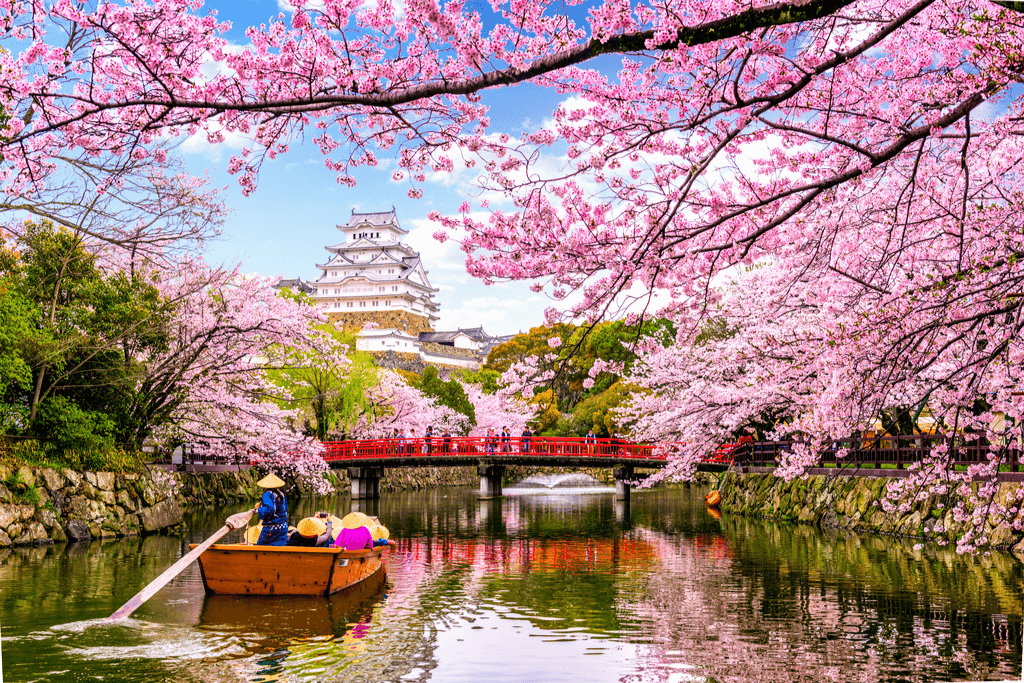
Japan is widely known as the land of cherry blossoms since this country possesses more than 200 species of sakura. Sakura has become a cultural symbol associated with many traditional Japanese activities in spring, including the custom of hanami (flower viewing). Most types of cherry blossoms have their unique beauty and different flowering times.
It must be great if you have the opportunity to join viewing parties in Japan when spring comes, so why don’t you spare some minutes to learn more about the sakura of Japan with us? Without further ado, here are nine typical cherry blossom varieties in Japan.
Somei Yoshino
Somei Yoshino is the name of the most popular springtime sakura of Japan. This type of sakura makes up about 80% of the total number of cherry trees in Japan. Each Somei Yoshino flower has five pinkish-white petals of equal size.
The petals of this cherry blossom tend to fade gradually from pink to white during its blooming process. Somei Yoshino is also the inspiration for many emblems of the traditional sakura flower.
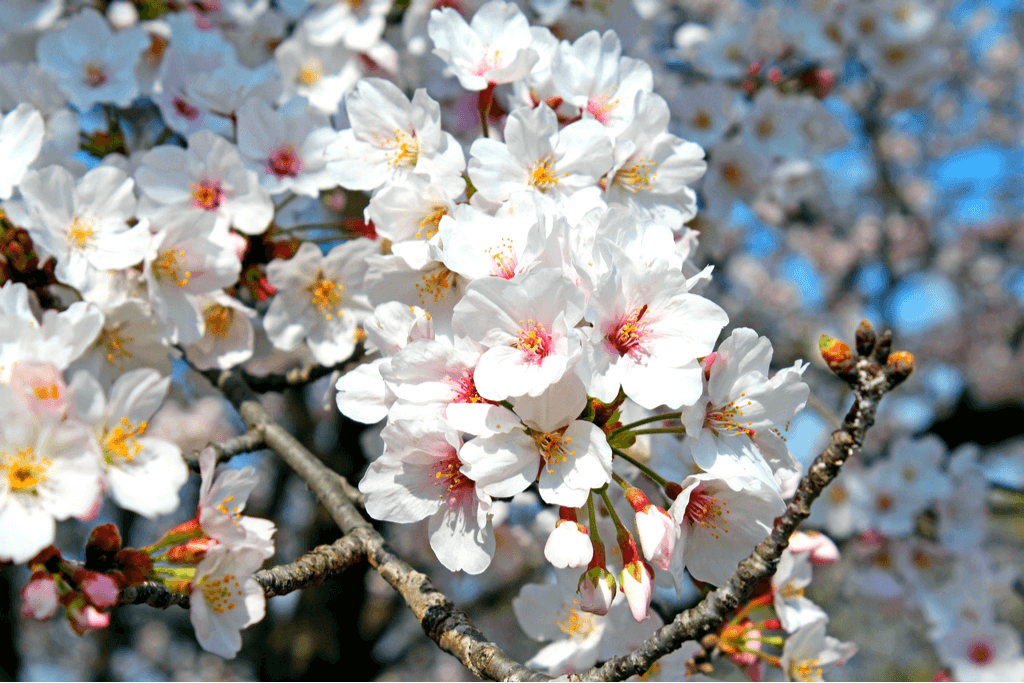
These cherry blossoms usually bloom on Shikoku and Kyushu in late March, which is earlier than in other places. As for different parts of Japan, they regularly complete bloom in early April. However, you may sometimes find Somei Yoshino blooming late (around May) in the northern areas of Japan, like Aomori.
Hirosaki Park in Aomori Prefecture is home to Japan’s oldest Somei Yoshino cherry tree. Despite being planted in 1882, it is still in good health. Nowadays, some of the best viewing spots to admire Somei Yoshino blossoms include Ueno Park in Tokyo and Hirosaki Castle in Aomori Prefecture.
Yamazakura
Yamazakura, also known as hill cherry, means mountain cherry blossom. The Yamazakura flowers also have five petals, like Somei Yoshino, and their petals are light pink. Interspersed with the cherry blossom bunches are many small brown and green leaves.
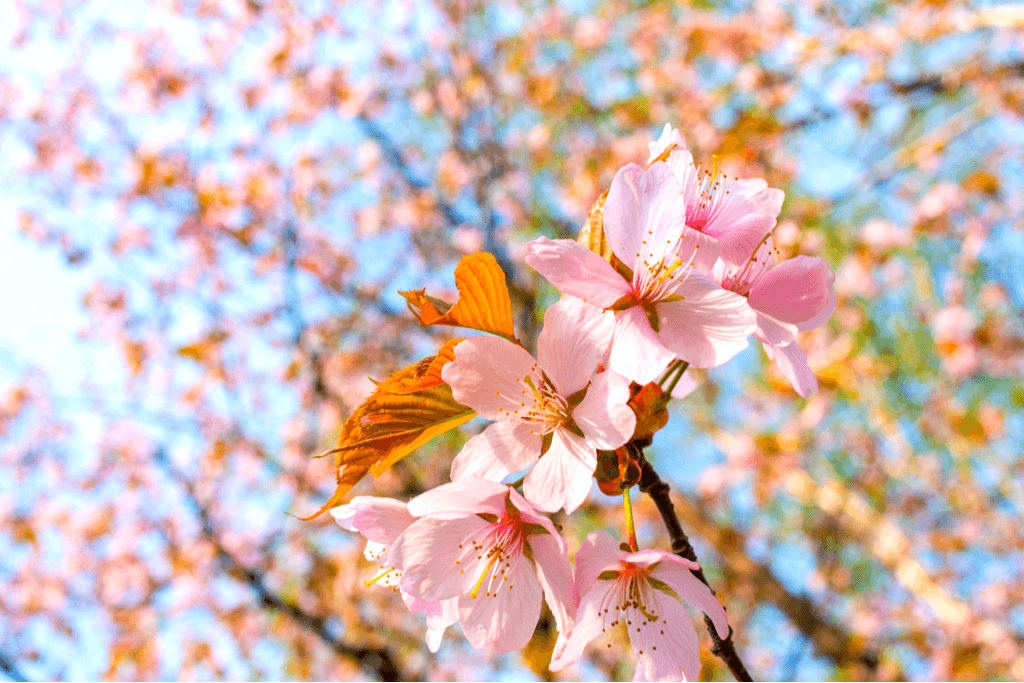
These wild sakura trees all grow naturally in mountainous areas. Both the Kanto region and the southern regions of Japan frequently have Yamazakura. To see a whole mountain of majestic cherry blossoms, we recommend going to Mount Yoshino in Nara Prefecture. The blooming season of Yamazakura starts in mid-March in Kyushu, while Kyoto and Tokyo have to wait till April.
Edohigan
Like Yamazakura, Edohigan is also a wild sakura species and is found mainly in the three islands of Japan – Honshu, Shikoku, and Kyushu. The start of Edohigan blooming periods may differ between late March and early April because of the weather conditions. Annually, Edohigan trees produce numerous lovely five-petalled blooms that are pinkish-white.
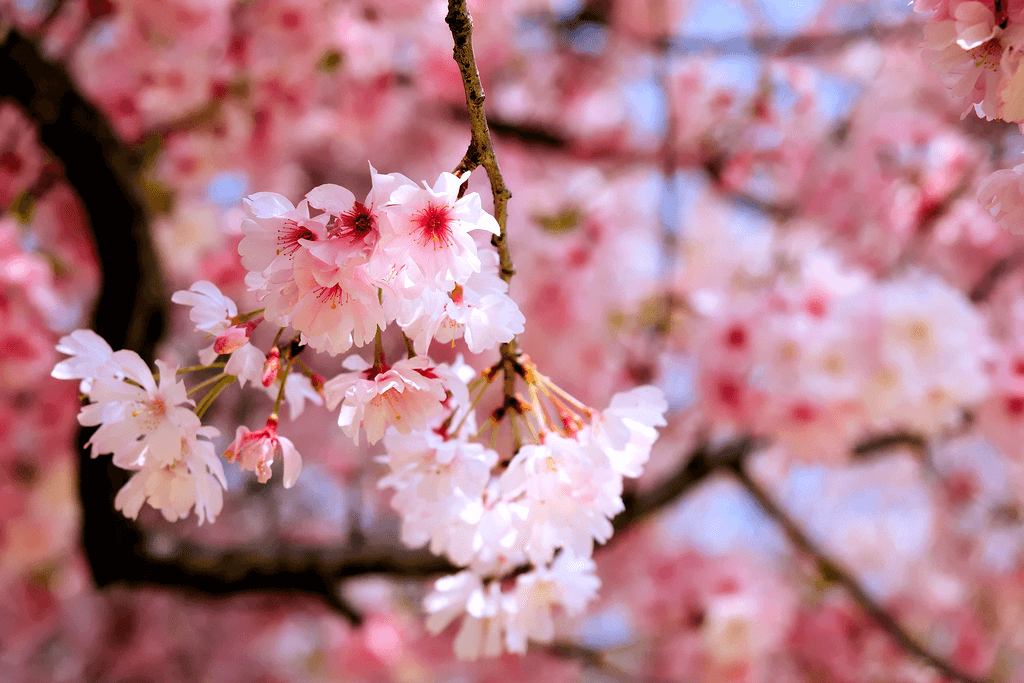
Edohigan trees Edo are cherry blossom trees with the highest longevity in the sakura world. The 2,000-year-old Yamataka Jindai Sakura, an Edohigan, is recognized as the oldest sakura of Japan. Besides there’s also an approximately 1500-year-old Edohigan tree planted by Emperor Keitai in Usuzumi Park (Gifu Prefecture) in the sixth century. It’s undeniable that this royal sakura tree is also one of the oldest sakura trees in Japan.
Want to enjoy more traditional snacks, especially in time for the upcoming sakura season? Check out Sakuraco! Sakuraco sends traditional Japanese snacks, teas, sweets, and kitchenware so you can taste Japanese culture in the comfort of your home!
Kawazu Sakura
Most people say this is the earliest blooming sakura in Japan (it usually blooms in early February). In addition, these blossoms also stay on the branches longer than other types of sakura. Therefore, people can easily view cherry blossom bunches for a whole month. Five glowing pink petals of Kawazu Sakura are more significant than wide other sakura varieties.
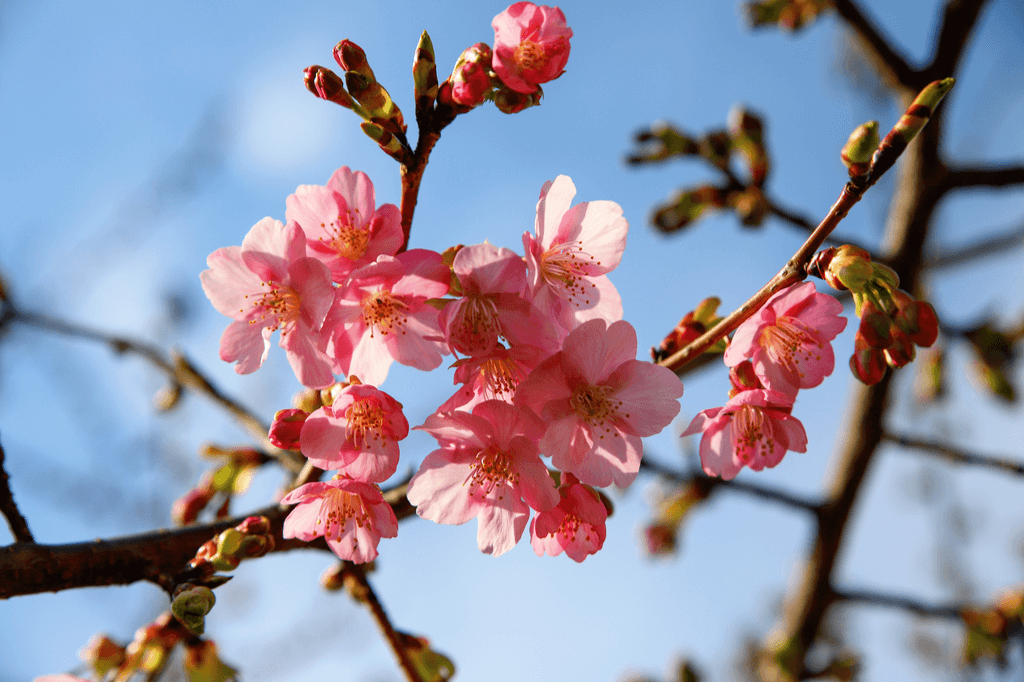
Every year, the Kawazu Sakura festival takes place in the small Kawazu town of Izu Hanto from mid-February to March. During this period, Izu Hanto, an area famous for its hot spring resorts, attracted a lot of tourists for cherry blossom viewing.
Yaezakura
Unlike typical five-petaled species of cherry blossom, Yaezakura flowers are known as “double-flowered cherry blossoms” thanks to their unique appearance. Each flower of this type typically has 10 – 50 petals. In addition to the variety in the number of petals, Yaezakura also impresses us with the color diversity of blossoms ranging from white to vivid pink.

The two most breathtaking Yaezakura locations in Japan are Nara Park (Nara Prefecture) and Osaka Mint (Sakura no Toorinuke). Additionally, the peak blossom season of Yaezakura usually starts in the middle of April and ends in the middle of May.
Gyoiko
Gyoiko is also one of the “double blossom” varieties, as there are 15-20 petals per flower. However, the most extraordinary feature of a Gyoiko flower is its yellowish-green color (light green), not pink or white as typical sakura types. Furthermore, the fresh green color of the petals and the pink color of the stamens create an elegant beauty for clusters of Gyoiko cherry blossoms.
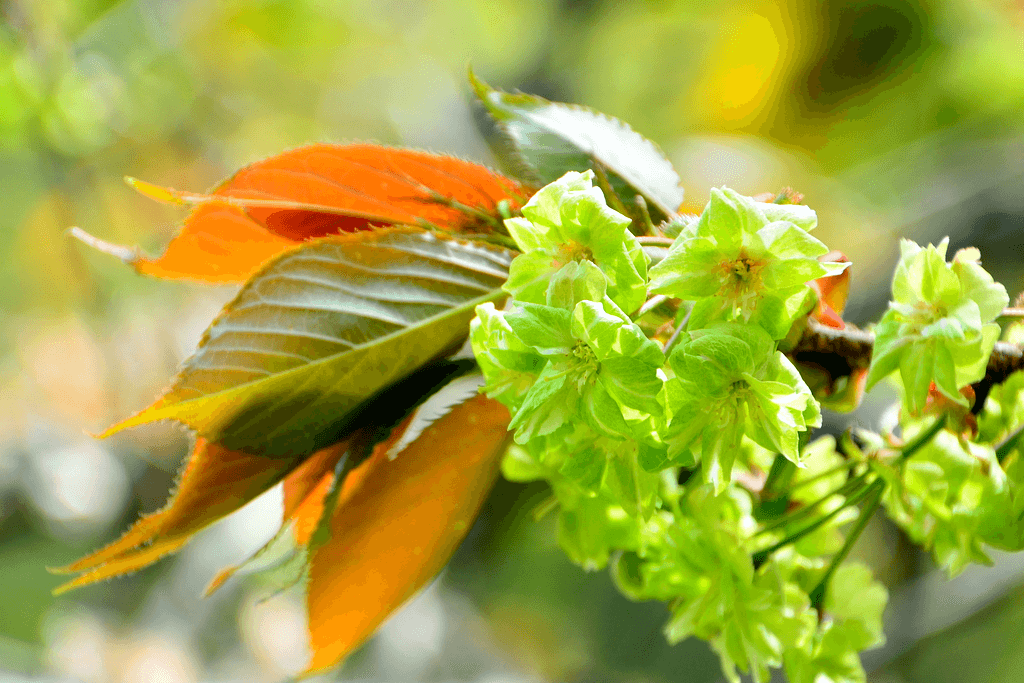
Gyoiko has a blooming season lasting from mid-April to the end of the month. Among over a hundred good spots to see outstanding Gyoiko blossoms, Ninnaji Temple in Kyoto and Mitoya River Bank in Shimane Prefecture are certain places to visit.
Oshima Sakura
Flowers of Oshima Sakura have large petals with pure white color. Oshima Sakura species originally grew in Izu Oshima Island. Despite its original area, there are numerous Oshima Sakura viewing sites for you to visit in Tokyo and Kanagawa Prefecture.
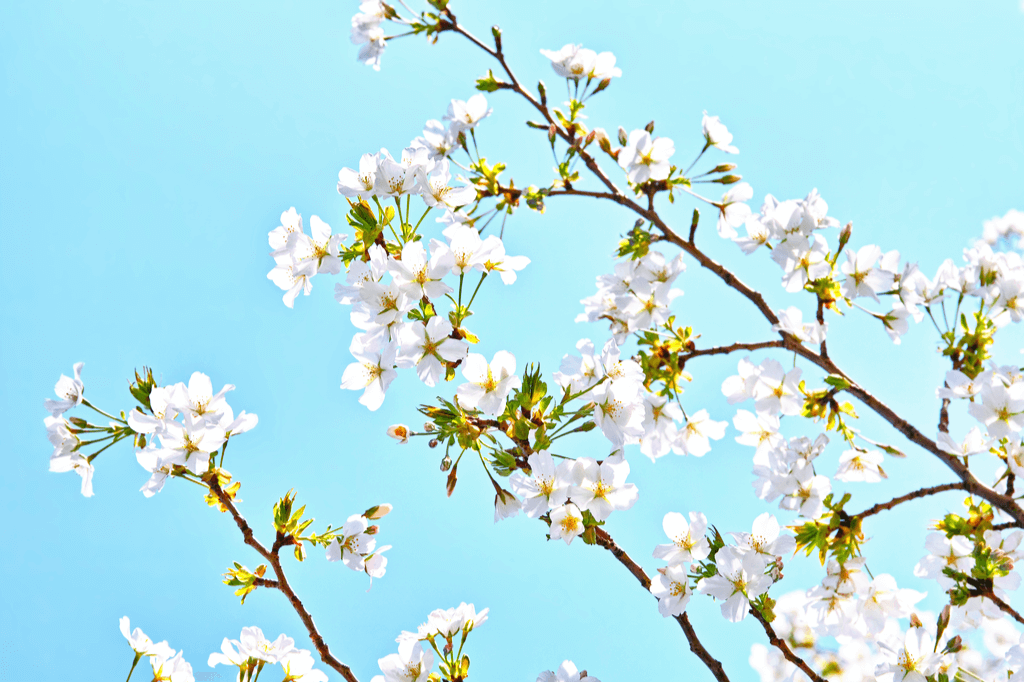
Oshima Sakura is also one of the cherry blossom types that bloom pretty late in spring. Its flowers usually begin to bloom in April.
Kanhizakura
This cherry blossom is originally from Taiwan, yet it’s also commonly grown in Okinawa, Japan. The graceful and exotic of these cherry blossoms come from their bell-like shape and lucid pink color.
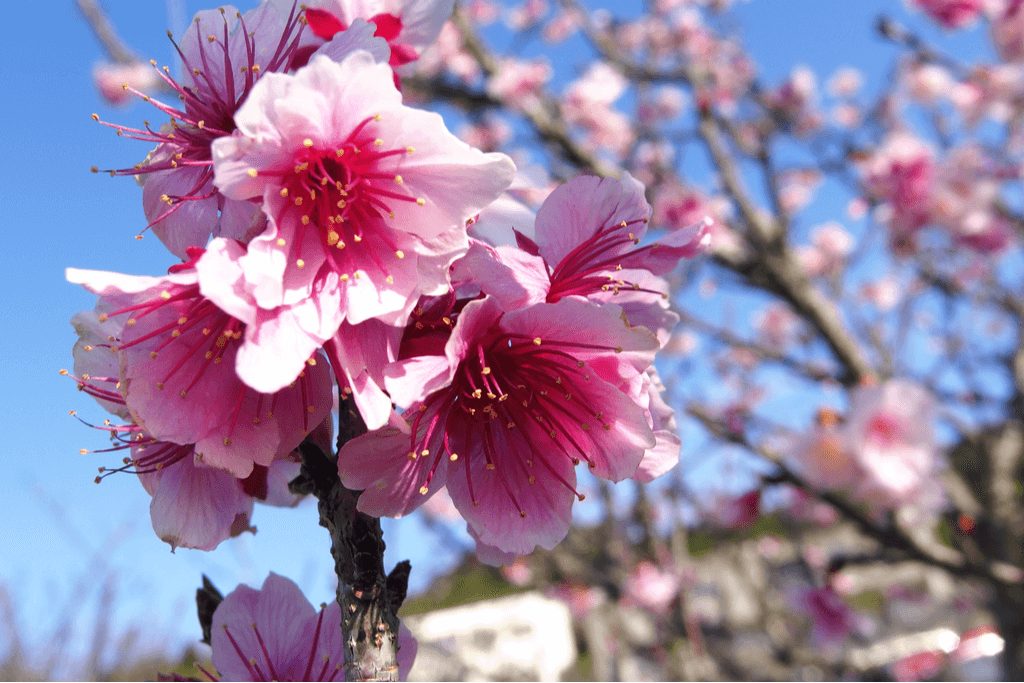
Kanhizakura flowers bloom on Honshu island in the early weeks of March, whereas in Japan’s southern area, the blooming time usually begins between January and February.
Mount Yaedak in Okinawa is one of the beautiful places worth experiencing in February, also the peak season of Kanhizakura bloom.
Shikizakura
Obara (Aichi Prefecture) is a location in Japan where you will have a chance to witness simultaneously the two well-known Japanese seasonal phenomena, which are Sakura (cherry blossom) and Koyo (autumn leave).
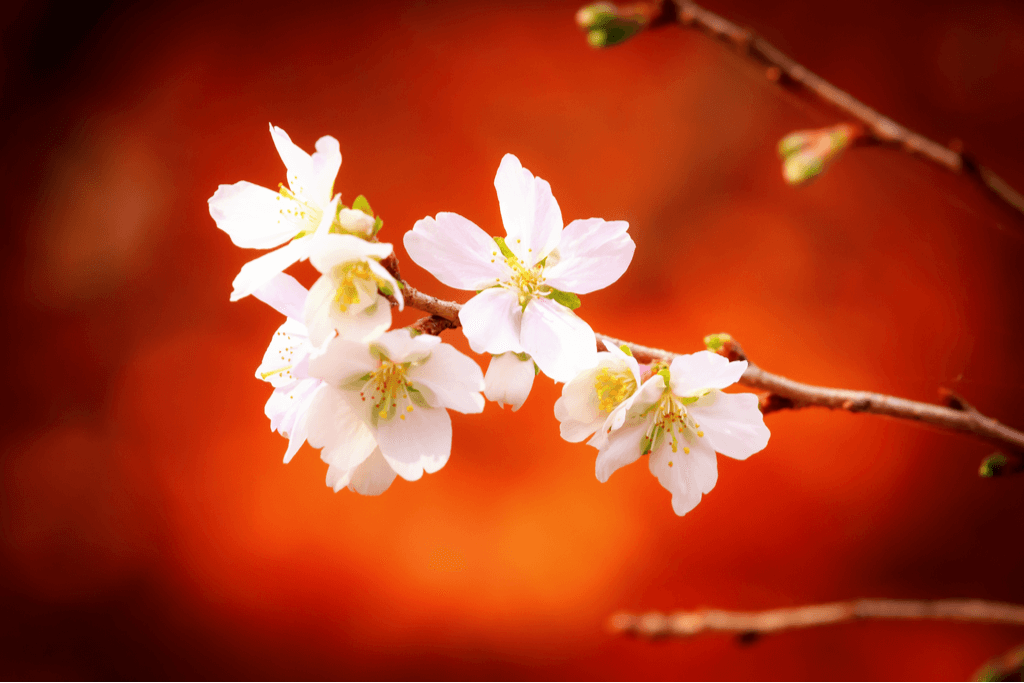
The shikizakura will surely give you the feeling of simultaneously experiencing two seasons of the year, something unbelievable. It happens thanks to the Shikizakura cherry blossom, a unique species that blooms twice a year – in spring and fall.
In addition, you can plan your hanami in spring or travel to Obara in autumn and fall/winter (the best is mid-November – early December) to admire the stunning natural landscape with two seasons in one. If you travel anywhere in this sakura country in the spring, you’ll have a perfect chance to explore more and genuinely admire the beauty of many splendid cherry blossoms.
Also, to know more about the meanings and exciting stories surrounding the sakura of Japan, please be sure to follow our upcoming blogs!
Remember to comment below to tell us which sakura flower you like best!

Discover authentic flavors with Sakuraco
Get Sakuraco 

Discover authentic flavors with Sakuraco
Get Sakuraco 
Related Articles
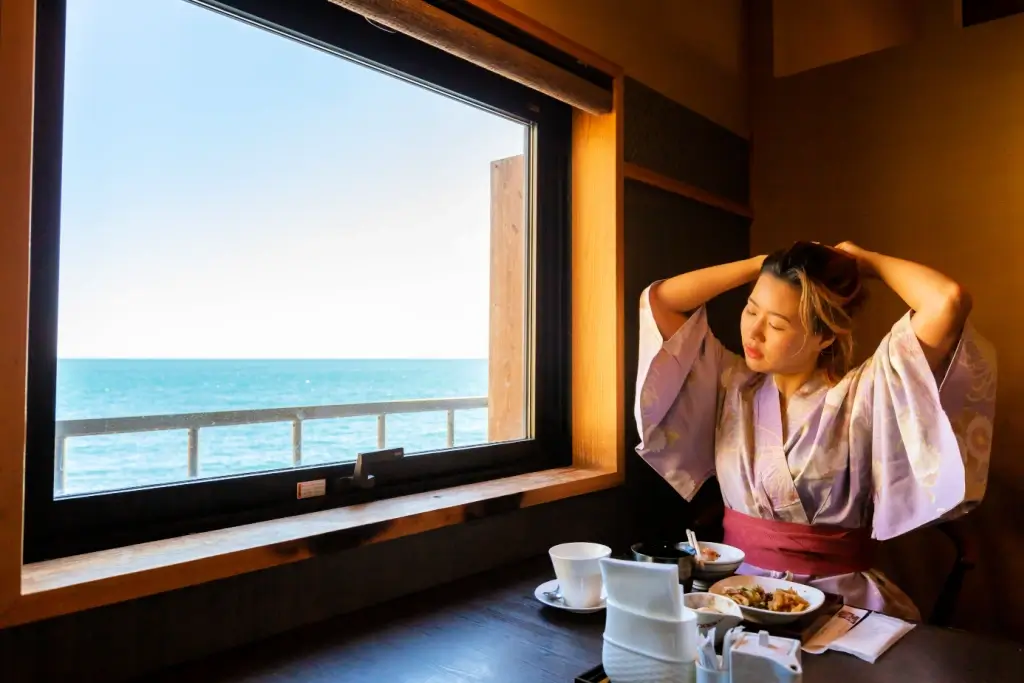
Hotels in Japan: Best Ones to Visit!
Japan is packed with hotels that promise unforgettable experiences, blending world-class service, jaw-dropping views, rich history, and a dash of the country’s unique traditional flair!
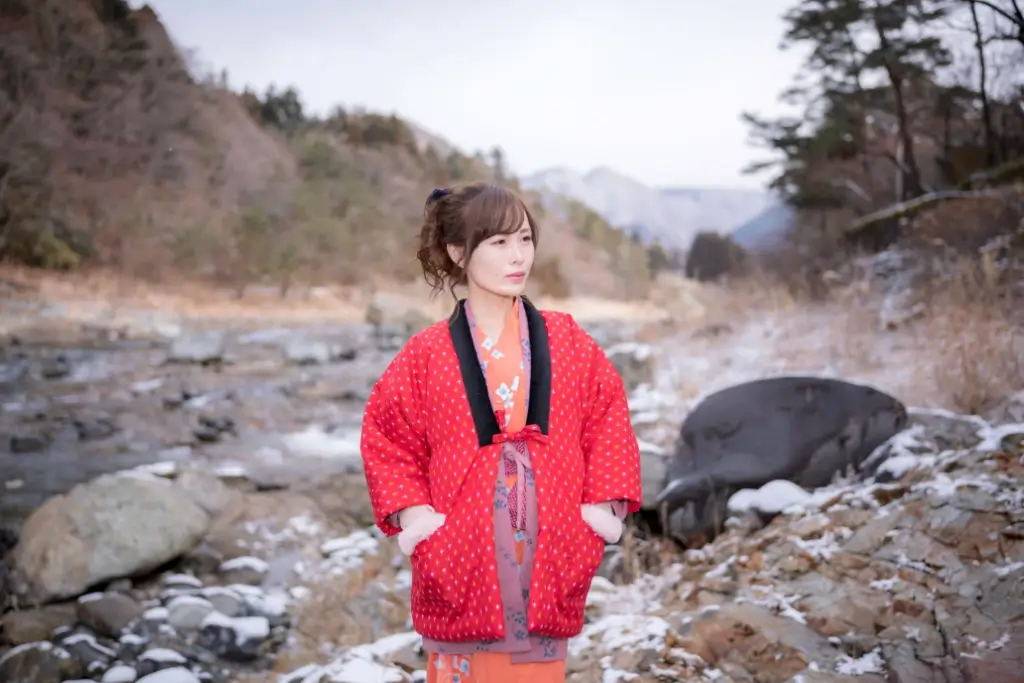
Hanten: The Ultimate Winter Coat from Japan!
Hanten, offer practicality and are symbols of traditional Japanese fashion, alongside the famous kimono. Join us as we explore hanten and some other beloved Japanese winter jackets!

What is a Japanese Wedding Like? A Look Into Shinto Rituals
A Japanese wedding is a beautiful example of how the country combines ancient rituals with modern influences. A traditional ceremony often revolves around Shinto practices, symbolizing purity, harmony, and good fortune. But, over time, couples in this country have also embraced Western weddings.

Japanese Calendar: What Are Microseasons?
The Japanese calendar includes many beautiful events, some popular globally and others less known. Kō (microseasons) were once celebrated but replaced by Western seasons



